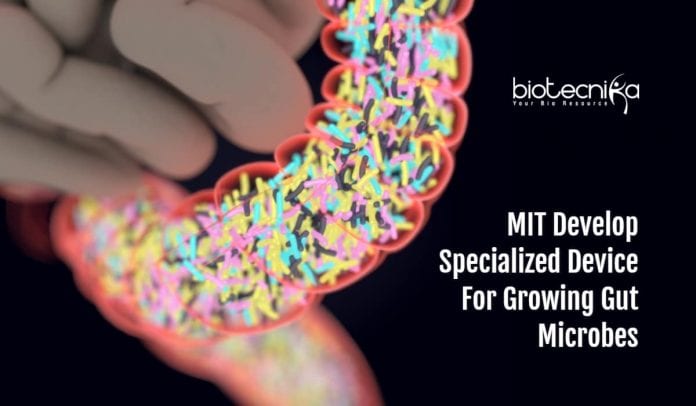Device To Model Gut Microbiome Developed By MIT Engineers
The human gut is home for several thousand bacteria, some of which are beneficial to human health while some others are associated with diseases. Since many of them cannot be grown in a lab, it’s difficult to determine the precise role of each bacteria
The difficulty is much worse for those bacteria that cannot live in environments that are oxygen-rich. But the mechanical and biological engineers at MIT have now developed a new device for growing oxygen intolerant bacteria in tissue that replicates the lining of the colon. The bacteria can survive in this device for up to four days.
Linda Griffith, Professor of Teaching Innovation in MIT’s Department of Biological Engineering, said it was really important to contribute a device to the scientific community that could be used for such extreme gut bacteria. The scientists studied how they can grow these bacteria and their effects on the human colon.
They grew Faecalibacterium prausnitzii, a strain of bacteria using this system. It’s a bacteria that protect against inflammation in the human gut. They found that these bacteria often diminished in patients with Crohn’s disease release a fatty acid called butyrate through
which most of their protective effects are exerted.The study led by David Trumper, an MIT professor of mechanical engineering and Griffith, was published in the journal Med.
Modeling the microbiome environment of the human gut in animals is difficult because animals like mice have a very different diet from humans. And most of the bacteria living in the human gut do not require oxygen to survive, meaning they are anaerobic. Bacteria like F. prausnitzii, cannot tolerate oxygen exposure, making their study difficult in laboratories.
There are devices where bacteria that tolerate low levels of oxygen can be grown with human colon cells. But completely oxygen-intolerant bacteria like F. prausnitzii cannot be grown on these.
Device to Model Gut Microbiome
MIT designed a device to overcome this. The oxygen levels in each part of the system can be precisely controlled in this device. Cells from the human mucosal barrier of the colon are coated on a channel in this device. Nutrients are pumped in below these cells to keep them alive. Although this layer is oxygen-rich, the concentration of oxygen decreases toward the top of the mucosal layer, which is very similar to the conditions of the interior of the human colon. And the barrier cells secrete a dense layer of mucus just how they do in the human colon. The MIT team showed that these cells could survive in this oxygen-free outer layer of the mucus for up to four days. The fluid flowing across it maintains the oxygen-free condition as wells as contains nutrients for the microbes.
This system allowed them to show that cell pathways involved in inflammation are influenced by F. prausnitzii. After the bacteria produce adequate levels of butyrate, the mucosal cells showed a reduction in the activity of a pathway called NF kappa B calming inflammation.
Reduced levels of F. prausnitzii is often found in patients with Crohn’s disease. The researchers hypothesized that the lack of these bacteria might be contributing to the overactive inflammation seen in those patients. They tried adding butyrate to the system, hoping to reproduce the effects they saw when bacteria were present. This implies that other mechanisms might be associated with the effects generated by these bacteria.
The scientists are planning to use their system to study the effects of other bacteria that are believed to play a role in Crohn’s disease. They hope to further explore these species and their effects.
They are also planning to collaborate with Alessio Fasano at Massachusetts General Hospital, to grow mucosal tissue from patients with gastrointestinal disorders like celiac disease. Microbe-induced inflammation in cells with different genetic backgrounds could then be studied using this tissue.
Griffith said they are hoping to show how the inflammation and microbes work together with the genetic background of the host and to see if there could be people genetically susceptible to having microbes interfere with the mucosal barrier a little more than other people. She also hopes to study other types of mucosal barriers, like those at the cervix and endometrium, using the device that model the human gut microbiome.






























